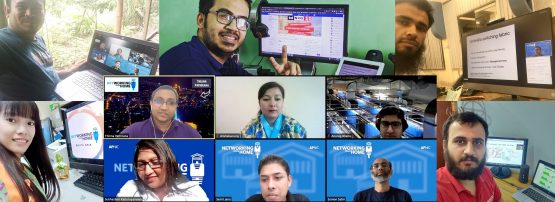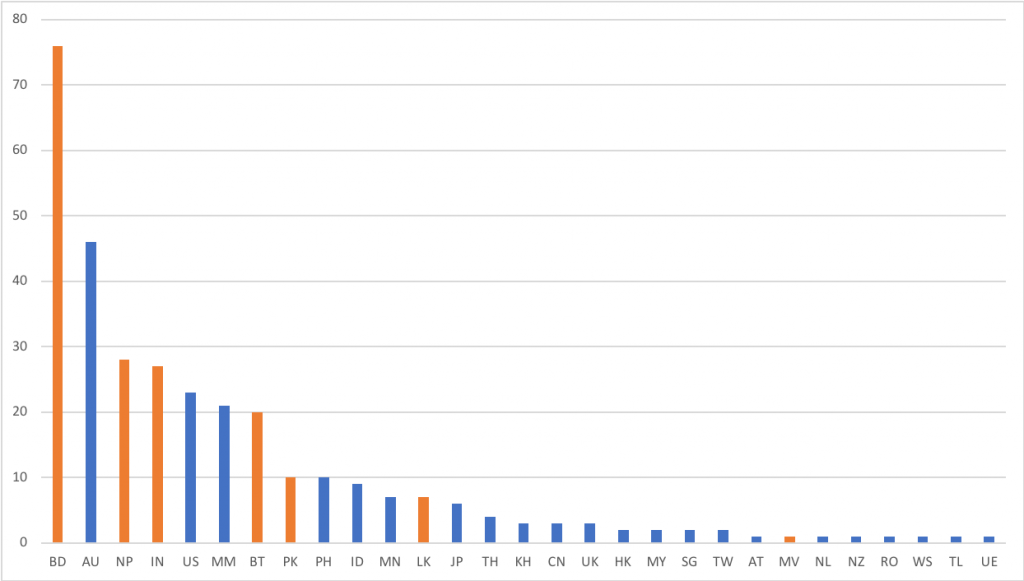
It was South Asia’s turn for the Networking from Home experience on Wednesday, 17 June with 319 people from 29 economies attending the second NFH event.
In just over 2 hours 45 minutes, the event covered topics including DNS and network security, MANRS, IXP automation and diagramming, and DNS privacy with engaging presenters drawn from across the APNIC region. It also included a diverse panel of speakers from Sri Lanka, Bhutan, India, Nepal and Bangladesh who discussed the operational impacts of the COVID-19 pandemic on networks in South Asia.
Fifty-three percent of attendees were from South Asian economies, with 91% of all attendees drawn from the APNIC region. The three largest economies for attendance were Bangladesh, Australia and Nepal.

Peak concurrent users was 222, with around 200 concurrent viewers on average during the event. Average watch time among attendees was 1 hour 14 minutes.
A joint initiative of Network Operator Groups (NOGs) and APNIC, NFH events aim to address the gap resulting from cancellation or postponement of many NOG meetings due to COVID-19 restrictions. The program committee consisted of representatives from bdNOG, btNOG, INNOG, LKNOG, npNOG and SANOG, plus representatives from APNIC and ISOC.
Please show your support for your local NOGs and find out how you can get involved today. APNIC and the NOGs in the region would like to thank everyone who attended the first two events so far for the positive support you’ve shown — we’re glad you’re enjoying it.
If you missed it, or the first event, you can watch the recordings or browse the presentations on the NFH site.
Join the next NFH!
NFH East Asia will take place on 15 July: register now. If you have a great presentation you’d like to share with the community, submit a paper before 8 July.
In total, there will be four free online events, held in the time zones of South East Asia, South Asia, East Asia and Oceania, and everyone is welcome.
The views expressed by the authors of this blog are their own and do not necessarily reflect the views of APNIC. Please note a Code of Conduct applies to this blog.
